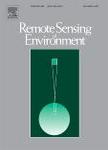版权所有:内蒙古大学图书馆 技术提供:维普资讯• 智图
内蒙古自治区呼和浩特市赛罕区大学西街235号 邮编: 010021

作者机构:Indiana State Univ Ctr Urban & Environm Change Dept Earth & Environm Syst Terre Haute IN 47809 USA Zhejiang Univ Coll Environm & Resource Sci Inst Appl Remote Sensing & Informat Technol Hangzhou 310058 Zhejiang Peoples R China
出 版 物:《REMOTE SENSING OF ENVIRONMENT》 (环境遥感)
年 卷 期:2020年第240卷第0期
页 面:111707-000页
核心收录:
学科分类:12[管理学] 0830[工学-环境科学与工程(可授工学、理学、农学学位)] 1201[管理学-管理科学与工程(可授管理学、工学学位)] 1002[医学-临床医学] 08[工学] 0816[工学-测绘科学与技术]
基 金:China Scholarship Council Zhejiang University USGS IndianaView Program via Purdue University
主 题:Nighttime light imagery DMSP-OLS Pixel Blooming Effect Point spread function Urban areas
摘 要:In the last two decades, the advance in nighttime light (NTL) remote sensing has fueled a surge in extensive research towards mapping human footprints. Nevertheless, the full potential of NTL data is largely constrained by the blooming effect. In this study, we propose a new concept, the Pixel Blooming Effect (PiBE), to delineate the mutual influence of lights from a pixel and its neighbors, and an integrated framework to eliminate the PiBE in radiance calibrated DMSP-OLS datasets (DMSPgrc). First, lights from isolated gas flaring sources and a Gaussian model were used to model how the PiBE functions on each pixel through point spread function (PSF). Second, a two-stage deblurring approach (TSDA) was developed to deconvolve DMSPgrc images with Tikhonov regularization to correct the PiBE and reconstruct PiBE-free images. Third, the proposed framework was assessed by synthetic data and VIIRS imagery and by testing the resulting image with two applications. We found that high impervious surface fraction pixels (ISF 0.6) were impacted by the highest absolute magnitude of PiBE, whereas NTL pattern of low ISF pixels (ISF 1.5 km) and circular objects (radius 0.5 km), and for NTL data with different noise levels ( 0.6 sigma). In summary, the proposed framework offers a new opportunity to improve the quality of DMSP-OLS images and subsequently will be conducive to NTL-based applications, such as mapping urban extent, estimating socioeconomic variables, and exploring eco-impact of artificial lights.